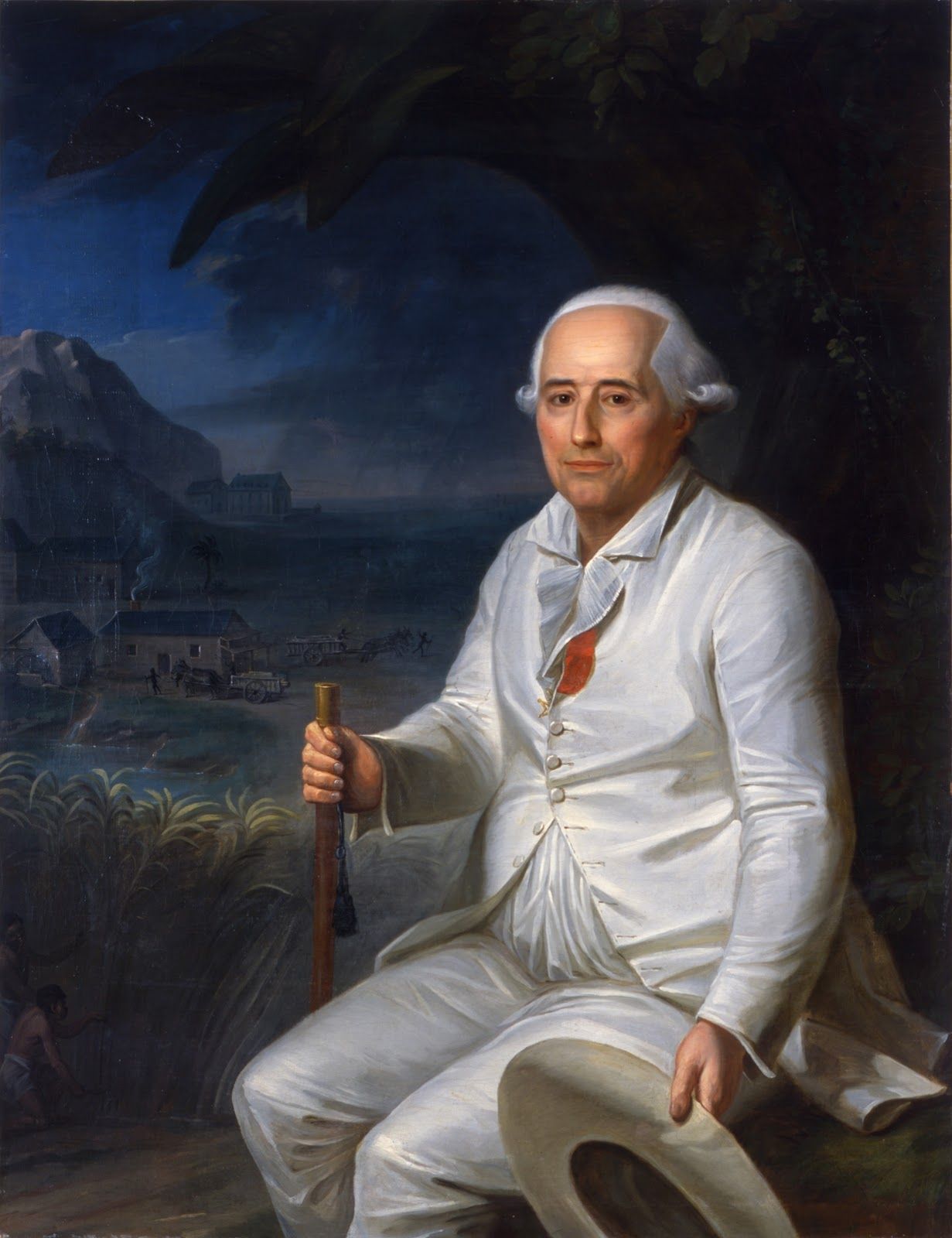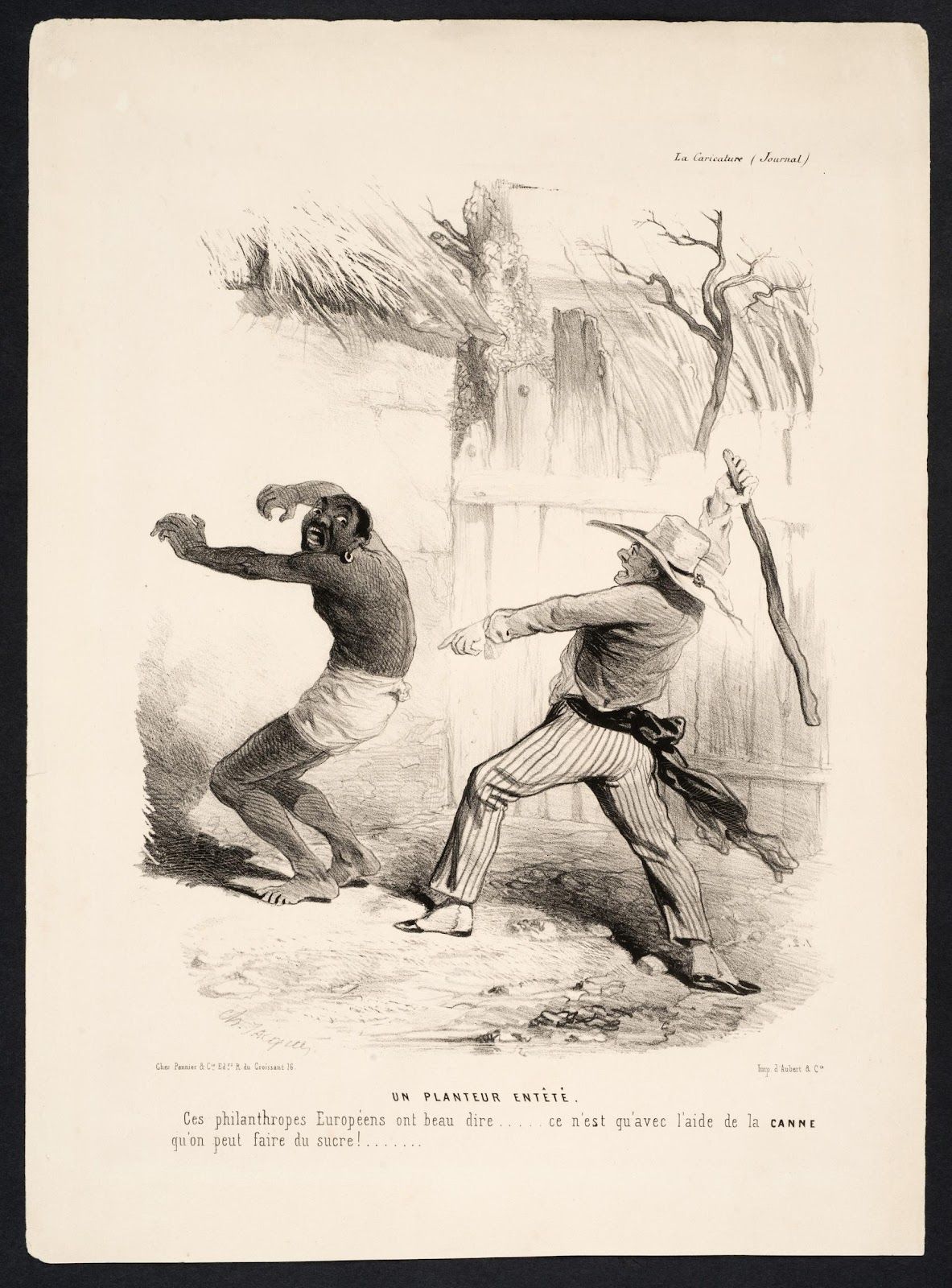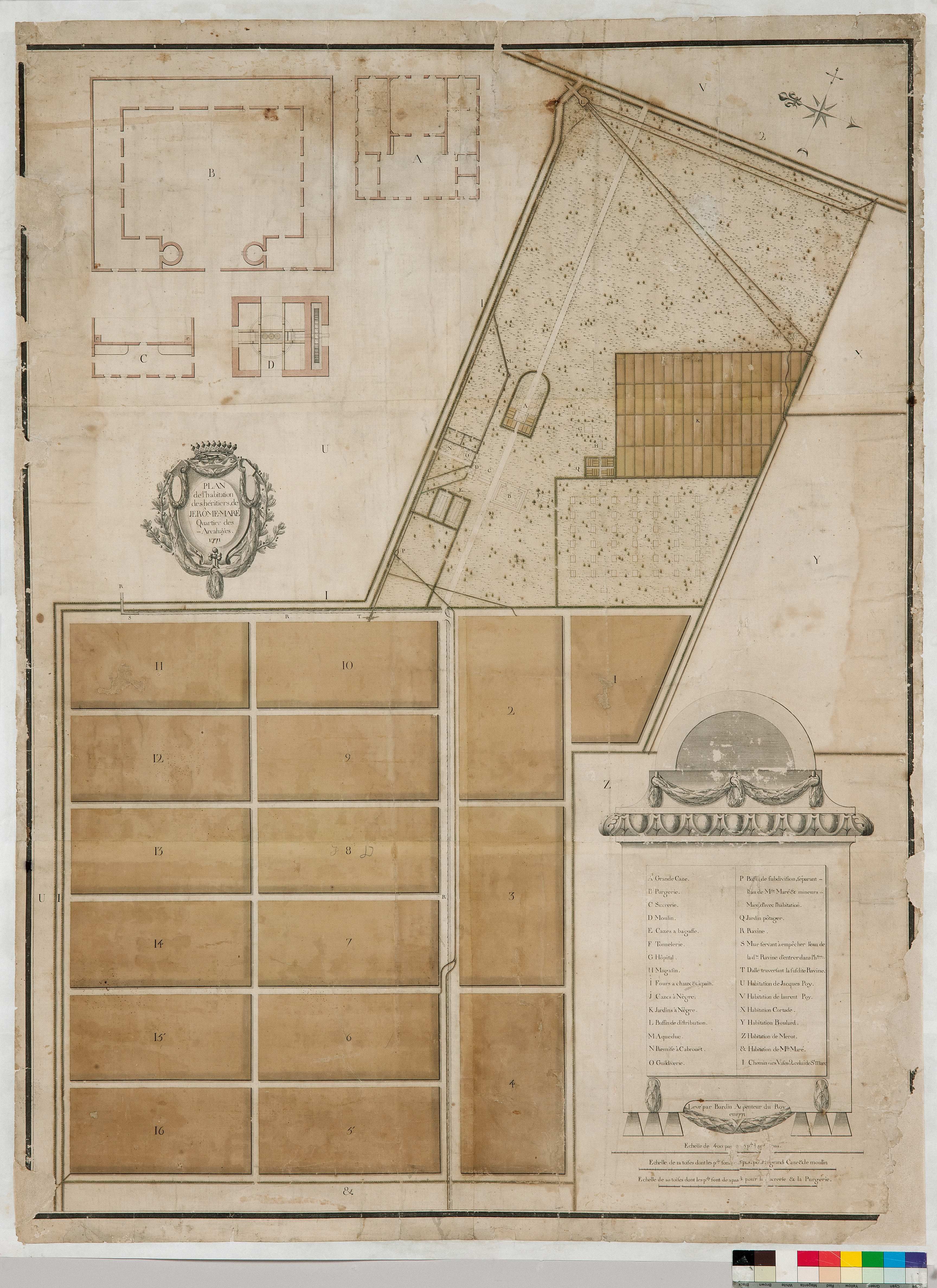
In Creole society, where white settlers enjoyed the privilege of their skin color, success was also measured in terms of material power and wealth. A distinction was therefore made between the “petits Blancs” (small Whites) and the “grands Blancs” (big Whites), who were essentially sugar planters, administrators, and owners of large plantations. Two slaves are visible in the lower left-hand corner.
After Nicolas de Largillière
Portrait of a planter
18th century Oil on canvas, 126 x 100 cm
Bordeaux, Musée d’Aquitaine, Gift of Chatillon, Accession No. 2003.4.3

This satirical lithograph cynically denounces the mistreatment of Africans enslaved on sugar cane plantations. Humor is used in a violent way to denounce the conditions of slaves in the colonies and the brutality of the planters.
Charles Jacquier
A stubborn planter
c. 1830 - 1840 Lithograph from newspaper “La caricature”, 36 x 26 cm
Bordeaux, Musée d’Aquitaine, Gift of Chatillon, Accession No. 2003.4.114
.jpg)
This drawing by an unknown artist shows a male slave cutting sugar cane, watched on by an elegantly dressed planter. In the background, two more slaves are binding the topped stems together, which will then be transported to the mill. The scene looks peaceful, a far cry from the back-breaking work that the “hoe negroes” assigned to working the fields were forced to do. The initial of the signature, “M”, may be that of French draftsman and lithographer Frédéric Mialhe (1810 - 1880), who lived in Cuba between 1838 and 1854.
Unknown
Sugar cane harvesting scene
c. 1830 Sepia wash signed “M.” in bottom right, 23.2 x 28.8 cm
Bordeaux, Musée d’Aquitaine, Gift of Chatillon, Accession No. 2003.4.104

The Maré family, born and raised in Nantes, owned homes in the Vases and Boucassin districts in the north of Port-au-Prince. They were linked to Nantes through their familial and commercial relationship with the Grou family, one of the city’s leading merchant and slave-owning families in the middle of the century. At that time, Jérome Maré (1729-1759) was captain of the Arcahayes militia and as a part of his succession, a captioned plan detailing the facilities of “La Solitude” sugar estate was drawn. We can see cane fields, the master’s residence, the slaves’ living quarters, as well as the food gardens reserved for them and, at the heart of the map, the industrial buildings essential to sugar production. The colonial plantation is a perfectly organized, self-contained universe.
Notice : © Château des ducs de Bretagne – Musée d’histoire de Nantes
La Solitude, habitation sucrière de Jérôme Maré, quartier des Arcahayes à Saint-Domingue
[La Solitude, Jérôme Maré's sugar dwelling in the Arcahayes district of Santo Domingo]
1771
Watercolour drawing on laid paper, 129.6 x 96.5 cm
Château des Ducs de Bretagne - Musée d’Histoire de Nantes, INV 2010.26.2
Purchase supported by the FRAM
Crédit photo : ©Alain Guillard / Château des ducs de Bretagne - Musée d'histoire de Nantes